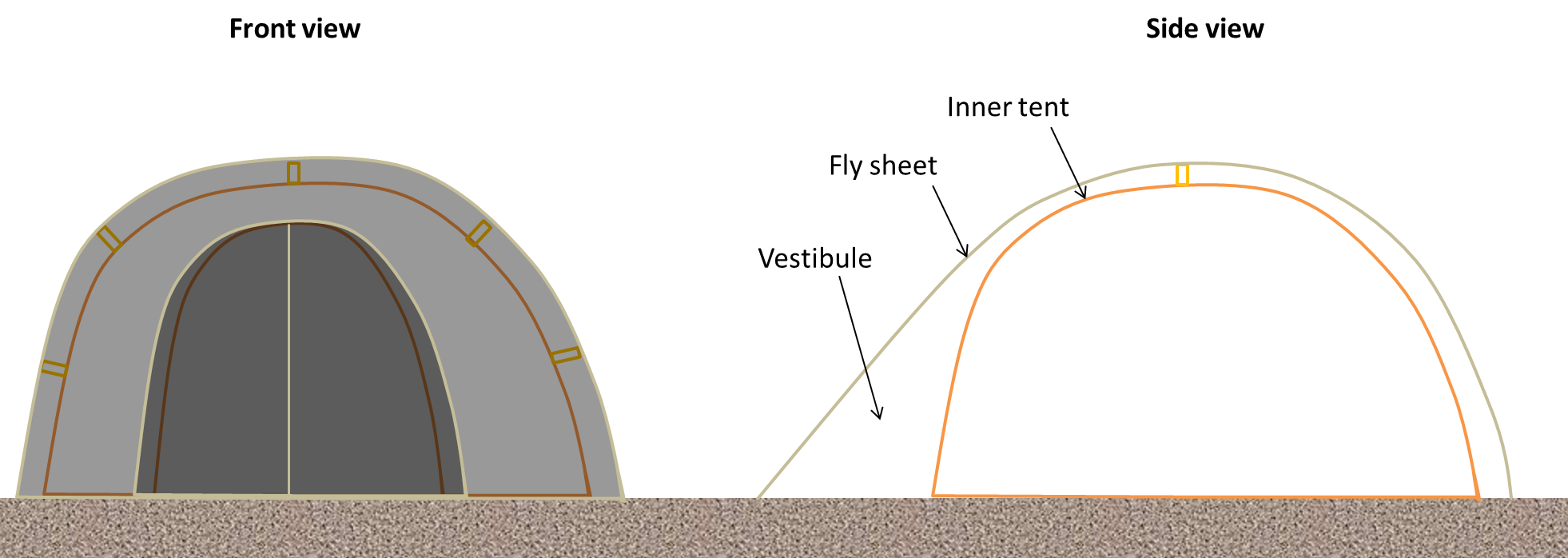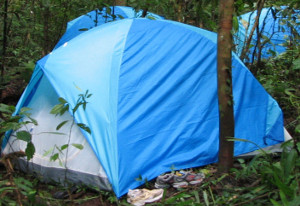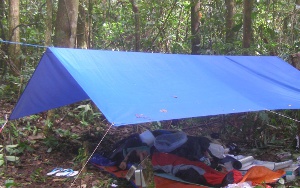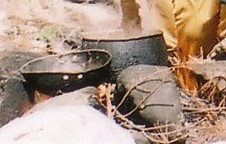There are a wide range of tent types with different designs and characteristics for trekkers to choose from. Dome tents are more often used on treks than A-frame tents as they are lighter and easier to setup than the latter. Dome tents may also be setup on rocks or on hard grounds as they do not need to be pegged down to maintain their shape unlike A-frame tents. However, there are many variants of the dome tents each with its advantage. For treks in tropical rainforest, here are some basic features that will be useful when selecting a tent.
Tent mosquito net
The mosquito net needs to keep out biting insects other than mosquitoes. Sandflies are very small and may be less than 0.5 mm. The mosquito net needs to be sufficiently fine to keep them out. Tent mosquito net with pore-size is more than 1 mm should not be considered.
Ideally, the fly sheet should open up side-ways when unzipped instead of dropping onto the ground so that you will not accidentally step on it when you enter or leave the tent.

Illustration of dome tent design |
Fly sheet
The main purpose of the fly sheet is to keep out rain. In tropical rainforest where the rain can get very heavy, it is important that the fly sheet is able to adequately protect the inner tent. Although most tents are made out of woven man-made fabric that repels water, they are designed to allow air flow such that condensation build up is kept to a minimum. This also means that water will seep into the inner tent if it is exposed to water for prolong duration. It is highly recommended to find a tent with flysheet that covers the whole tent. When it is not raining, the fly sheet may be pegged and rolled up to one side to expose the inner tent for better ventilation.
It is just as important that the fly sheet does not touch the inner tent when it is put on. In the cool and humid tropical condition, condensation will quickly build up overnight in the inner wall of the tent if the fly sheet is allowed to "stick" to the inner tent wall.
Vestibule
Having a vestibule is very useful. It provides a sheltered space for your dirty boots and if more space is needed inside the tent, your bags too. When it rains, you may cook under the vestibule instead of in the tent.
Weight
A tent is easily the heaviest gear in your backpack. If the dome tent does not require an additional pole for its vestibule, that will reduce the weight by a couple of hundred grams.


